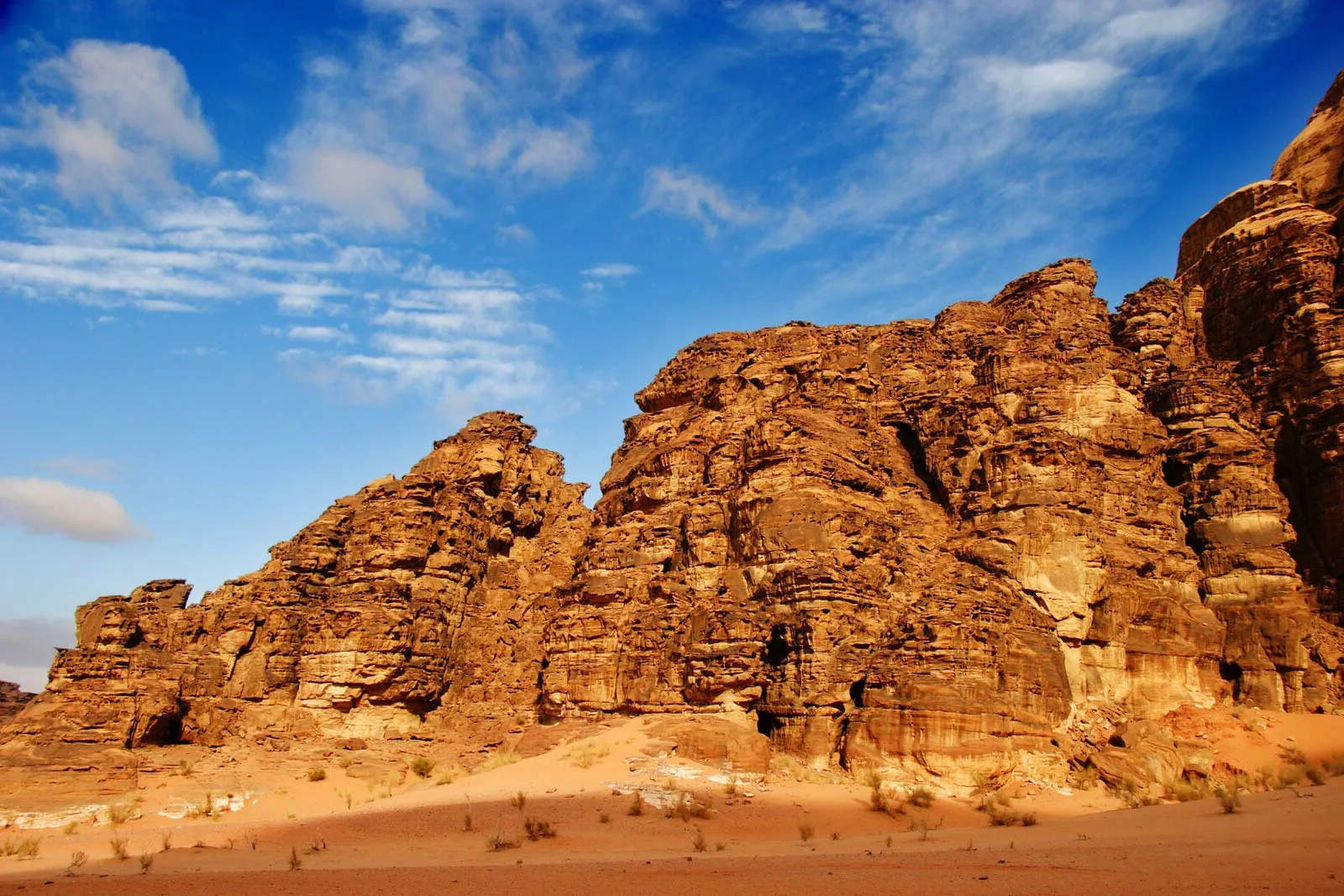
Ever wondered what secrets lie beneath the vast, sun-kissed dunes of the Arabian Desert? Well, you're in for a treat! This sprawling expanse isn't just about sand; it's a world brimming with surprises. From its unique wildlife that has adapted to the harsh conditions, to ancient tales of nomadic tribes and hidden oases, the Arabian Desert is a place of mystery and marvel. Did you know that this desert is one of the largest continuous sand deserts in the world? Or that it plays a crucial role in the culture and history of the people living around it? Buckle up, as we're about to take a whirlwind tour through 16 of the most fascinating facts about the Arabian Desert. Get ready to have your mind blown by the wonders of this majestic desert landscape!
Key Takeaways:
- The Arabian Desert is not just a vast expanse of sand, but a thriving ecosystem with unique plants and animals adapted to survive extreme temperatures and limited water.
- The desert has a rich history, serving as a birthplace of civilizations, a hub for trade routes, and a modern-day destination for adventure tourism, while facing environmental challenges like climate change and water scarcity.
What Makes the Arabian Desert Unique?
Spanning most of the Arabian Peninsula, the Arabian Desert is a vast landscape of sand dunes, gravel plains, and rocky mountains. This desert is not just a barren wasteland but a place teeming with life and rich history. Its unique features set it apart from other deserts around the world.
- Size: Covering approximately 2.3 million square kilometers, it's the largest desert in Asia and the fourth largest in the world.
- Climate: Known for its extreme temperatures, daytime temperatures can soar above 50°C (122°F) in summer, while nights can be surprisingly cool.
- Flora and Fauna: Despite harsh conditions, the desert is home to a variety of plants and animals adapted to survive in such an environment. Species include the Arabian oryx, sand gazelles, and various reptiles.
Historical Significance of the Arabian Desert
The Arabian Desert has played a crucial role in history, serving as both a cradle for civilizations and a crossroads for trade routes.
- Birthplace of Civilizations: Ancient tribes and civilizations thrived here, utilizing oases as centers of trade and culture.
- Trade Routes: Historically, it was part of the incense trade route, connecting the Mediterranean world with Arabia, India, and beyond.
Survival Strategies in the Arabian Desert
Life in the Arabian Desert requires adaptation and ingenuity to overcome the challenges posed by the environment.
- Water Conservation: Indigenous plants and animals have evolved unique methods to minimize water loss and maximize water storage.
- Bedouin Culture: The Bedouins, nomadic people of the desert, have developed survival skills over centuries, including the ability to find water and navigate vast, featureless terrains.
The Arabian Desert Today
In modern times, the Arabian Desert continues to be a place of discovery, adventure, and economic development.
- Conservation Efforts: Protected areas and reserves have been established to preserve the desert's biodiversity.
- Economic Resources: The desert is rich in oil, contributing significantly to the economy of the region.
- Tourism: Adventure tourism, including safaris and sandboarding, attracts visitors from around the globe.
Unique Features of the Arabian Desert
The Arabian Desert is not just a monotonous expanse of sand but a landscape filled with natural wonders and surprises.
- Rub' al Khali: Also known as the Empty Quarter, it's the largest continuous sand desert in the world.
- Rock Art: Ancient petroglyphs, some dating back thousands of years, offer a glimpse into the lives of early inhabitants.
Environmental Challenges Facing the Arabian Desert
Despite its beauty and resources, the Arabian Desert faces several environmental challenges.
-
Climate Change: Rising temperatures and changing precipitation patterns threaten the delicate balance of desert ecosystems.
-
Overgrazing: Livestock grazing, particularly by camels and goats, can lead to desertification if not managed properly.
-
Oil Exploitation: Oil extraction and transportation pose risks to the desert's environment and wildlife.
-
Water Scarcity: The increasing demand for water for agricultural, industrial, and domestic use puts pressure on the desert's limited water resources.
A Final Stroll Through the Sands
We've journeyed across the vast, mysterious expanse of the Arabian Desert, uncovering secrets and marvels along the way. From its ancient civilizations, hidden beneath the sands, to the modern-day conservation efforts preserving its unique wildlife, this desert is a world of its own. It's a place where temperatures soar, yet life, in its most resilient forms, thrives. We've seen how the desert's oil reserves fuel economies worldwide and how its solar potential might power future generations. The Arabian Desert isn't just a stretch of sand; it's a testament to the endurance of nature and human ingenuity. Whether you're a seasoned explorer or a curious reader, these facts offer a glimpse into the heart of one of Earth's most awe-inspiring landscapes. So, as we leave the dunes behind, let's carry with us a newfound appreciation for this incredible corner of our planet.
Frequently Asked Questions
Was this page helpful?
Our commitment to delivering trustworthy and engaging content is at the heart of what we do. Each fact on our site is contributed by real users like you, bringing a wealth of diverse insights and information. To ensure the highest standards of accuracy and reliability, our dedicated editors meticulously review each submission. This process guarantees that the facts we share are not only fascinating but also credible. Trust in our commitment to quality and authenticity as you explore and learn with us.


